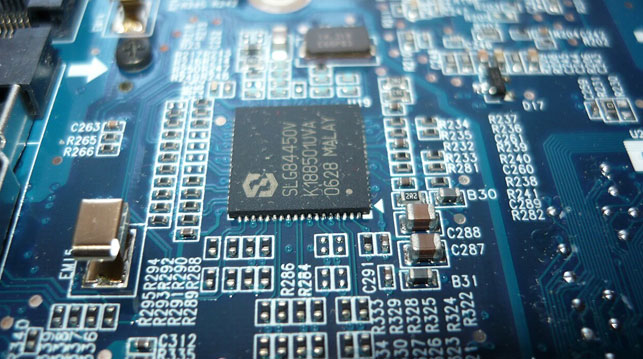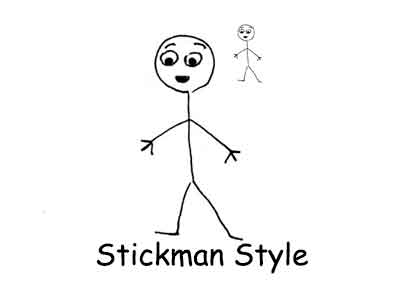
Once again, my friends, we dive into the wild world of less-common research paper formatting.
This time, our journey takes us to the world of engineering, where the Institute of Electrical and Electronics Engineers (IEEE) style is often used. Many technical fields, including electrical and mechanical engineering and computer science, require papers to use this format.
What Is IEEE Style?
IEEE style is based on Chicago formatting, so it should be relatively easy for an experienced writer or editor to pick up. Like Chicago, it uses numbered citations instead of inserting bibliographic information into the text, and like Chicago, it encourages the use of page numbers for direct quotes.
There are some key differences, though. Whereas Chicago style often involves superscripts and footnotes when citing outside sources, IEEE prefers the use of square brackets around citation numbers, like this [1]. If you’re “quoting a source directly, add the page number [2, p. 7].” Hmmm, looks a little like Vancouver style, too, huh? You’re not far off!
Get a free sample proofread and edit for your IEEE referencing.
Two professional proofreaders will proofread and edit your IEEE referencing.
Much like Vancouver, you’ll use the same number to refer to every instance of a certain source. So if you’re referencing a particular article by Susanna Simoleon and you number it [3], any time you refer to that article, it will get cited as [3].
There are no footnote citations in IEEE style. When you’re through writing, create your reference page by listing all your sources in order, with all bibliographic information next to the appropriate number. Done!
IEEE In-Text Citations
When using IEEE style, you should place your citation where it occurs in the sentence. Punctuation appears after the citation. Let’s look at some examples.
If you’re citing more than one source in a single sentence, you have two options. You can chain together your sources in one set of brackets, or you can list each individually. Here’s how that looks:
Which should you choose? In general, most publications prefer the first one, with each source bracketed individually.

However, it’s a matter of personal preference, often guided by your professor or the journal to which you’re submitting. Check out examples of published papers and choose the style that appears most often or the one specified by the journal in its Author Guidelines.
General Rules for IEEE Reference Pages
IEEE reference pages are fairly straightforward. Just create a numbered list of your sources, in order of appearance, and add the relevant bibliographic information.
What is that relevant info? Glad you asked!
In each entry, you’ll give the author’s initials, separated by periods and spaces, then that individual’s surname. Write out the word “and” before the final author’s name.
Write out every author up to six. If there are more than six authors, write out those six, then use “et al.”
Article titles are placed in quotation marks. Capitalize only the first word and any proper nouns and capitalized abbreviations.
Italicize the titles of journals and books, but not article titles.
Journals
Separate all key information with commas and write out “vol” and “no” for journal volume and issue. Start with the author’s initials and surname, then the article title in quotes, then the title of the journal in italics (with headline-style capitalization). Finally, add the volume, issue, and page numbers, finishing with the year of publication.
C. Attaboya, “Social studies in gibberish,” Quarterly Review of Doublespeak, vol. 20, no. 1, pp. 9-10, 2003.
Books
Books follow a similar format to journals. Use the author’s initials and surname, write out the title of the book in italics using headline-style capitalization, and give the place of publication, publisher, and year.
J. L. Frankenfurter and M. Scott, Eds., Sensory Receptors and Signal Transduction. New York: Nonesuch Publishing, 2001.
Electronic Sources
When citing an online source, be sure to note that it is an online source and include the date of access in addition to the URL and other pertinent information. At a minimum, try to include the author name (or authoring organization), article or page title, parent site, date of publication, URL, and access date.
Q. Hickens, “More thoughts on cats,” I Can Haz Cheezburger, Jan. 31, 2007. [Online]. Available: http://www.notanactualsite.com [Accessed Sept. 15, 2019].
Formatting IEEE References
When formatting, align all your references to the left. Number your entries at the left, enclosed in square brackets to match the format of citations in the text, then indent over to start your citation.
Single space the entries and double-space before a new entry.
Let’s look at this in practice.
Example of IEEE Bibliography
[1] A. Stoker, P. E. Jacobs, C. J. Brahms, K. Langley, and J. L. O’Hare, “Pseudoscientific babble: Comparison of evidence and fancy in current scholarship,” Journal of Hysterical Technology, vol. 37, no. 4, pp. 115-124, 2014.
[2] Epic Games, Fortnite. [Mobile Application]. Cary, NC: Epic Games, 2017.
[3] N. Sigman, “A series of scribblings,” in Fundamentals of Academic Rigor, 10th ed., R. Grey, J. K. Hanx, and A. J. Stephenson AJ, Eds. San Francisco, CA: Some Publisher; 2013, pp. 732-786.
[4] Q. Buckingham, “Pretending I know what I’m talking about,” How to Write Stuff, Nov. 1, 2013.
[Online]. Available: http://www.somewebsite.com/article
[Accessed March 13, 2019].
[5] Slightly Mad Research Staff, Standards of Practice Manual, Association of Crazed Researchers, 2011.
These general guidelines and examples should get you well on your way to appropriately formatting your next computer science or engineering paper. You may run into some stumpers with technical papers and conference presentations that are common in the engineering fields—in that case, take a look at the handy editorial manual published by the fine folks at the IEEE itself.
If you run into some issues, you can always reach out to a professional editor who’s experienced with all kinds of formatting styles, like the experts at Proofreading Pal!
Happy writing and citing!
Kate S.
Get a free sample proofread and edit for your IEEE referencing.
Two professional proofreaders will proofread and edit your IEEE referencing.
Get a free sample proofread and edit for your document.
Two professional proofreaders will proofread and edit your document.
We will get your free sample back in three to six hours!